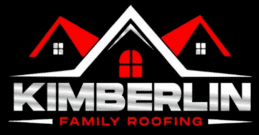When storm season rolls in, your roof is your home’s first line of defense against heavy rain, strong winds, and hail. The right roof design can mean the difference between minor wear and significant storm damage. From shape and slope to materials and reinforcements, certain roofing styles are better equipped to withstand extreme weather. In this blog, we’ll explore the best roof designs offering the best storm protection, helping you choose a structure that keeps your home safe and secure when nature strikes.
When choosing storm-resistant roofing, look for materials that last in windy climates. The right roof design and materials can keep your home safe, giving you peace of mind.
Table of contents
- Understanding Storm Damage Risks to Your Roof
- What’s the Strongest Type of Roof to Protect From Storms
- Essential Features of Storm-Resistant Roof Designs
- Top-Rated Materials for Storm-Resistant Roofing
- Professional Installation Requirements for Storm-Protected Roofs
- Maintenance Tips for Storm-Resistant Roofing Systems
- Cost Considerations and ROI for Storm-Resistant Roofing
- Conclusion: Ensuring Your Home’s Protection with the Right Roof Design
- FAQs
Understanding Storm Damage Risks to Your Roof
As a homeowner, knowing about storm damage risks is key. Storms can harm your roof, leading to expensive fixes and safety risks. Wind-driven heavy rainfall, debris, high winds, and uplift are common roof dangers.
It’s wise to check your roof twice a year, especially before storm seasons. This helps spot problems early. Look out for missing shingles, torn materials, and debris around your home.
Common Types of Storm Damage
- Hailstorms can badly damage roofing, especially asphalt shingles.
- Wind-driven rain can harm roofs, causing stains, sagging, and mold.
- Lightning can start fires, causing big roof damage.
Choosing durable roofing options for storm protection and the best roofing materials for hurricane areas can lower storm damage risks. This keeps your home safe and secure.
| Type of Storm Damage | Effect on Roof |
|---|---|
| Hailstorms | Significant damage to roofing materials |
| Wind-driven rain | Damage leading to stained ceilings, sagging areas, and mold growth |
| Lightning | Risk of fire and extensive damage to roofs |
What’s the Strongest Type of Roof to Protect From Storms

Protecting your home from storms is key. You need impact-resistant roof materials that can handle high winds and bad weather. Metal roofing is top-notch, lasting up to 140 mph winds.
Some of the strongest roofing options include:
- Metal roofing: withstands winds of up to 140 mph
- Wood shake roofs: resist wind speeds of up to 200 mph
- Ceramic tile roofing: withstands 100+ mph winds
These hurricane-proof roofing systems offer unmatched protection. Choosing the strongest roof keeps your home safe, even in extreme weather.
The roof’s design and how it’s installed matter a lot. A roof with a hip design and a 30-degree slope fights wind uplift. Using carbon steel or stainless steel fasteners and anchors secures the roof in hurricanes and high winds.
| Roof Type | Wind Resistance |
|---|---|
| Metal Roofing | Up to 140 mph |
| Wood Shake Roofs | Up to 200 mph |
| Ceramic Tile Roofing | 100+ mph |
Essential Features of Storm-Resistant Roof Designs
Protecting your home from severe weather starts with a top-rated roof. Weather-resistant materials are key to handling high winds and heavy rain. Think about the features that will best protect your home.
A good roof has several key features. The roof’s pitch and shape are important for fighting off strong winds. Properly installed roofs can greatly lower damage risks from severe weather. Also, using metal straps and ties adds strength to your roof.
Pitch and Aerodynamics
The roof’s pitch affects its wind resistance. Hip roofs, for example, are better than gable roofs at fighting wind. Their slope helps wind slide off, reducing roof pressure.
Structural Reinforcement Methods
Using metal straps and ties adds strength to your roof. These methods help keep your roof secure, even in extreme winds. With these features, you can make a roof that’s ready for severe weather, using materials that keep your home safe.
Water Management Systems
Water management systems, like good drainage and gutters, prevent water damage. Designing your roof with these in mind protects your home from severe weather. With the right materials and design, your home will be safe from the elements.
Top-Rated Materials for Storm-Resistant Roofing
Choosing the right materials for your storm-resistant roof is key to protecting your home. Look for wind-resistant roofing products that can handle high winds and severe weather. Metal, ceramic tile, and slate roofing are top choices because they’re durable and strong.
Durable roofing options like impact-resistant shingles also offer great protection. For example, GAF ArmorShield II and Owens Corning Duration Storm can handle winds up to 130 mph. CertainTeed Landmark IR and Atlas StormMaster Shake are also good choices.
Using wind-resistant roofing products can also save you money on insurance. Some insurance companies give discounts for homes with impact-resistant roofs. Plus, materials like rubber and synthetic tile are very resistant to hail and last a long time.
Choosing the right materials for your roof is crucial for your home’s safety. With wind-resistant roofing products and durable roofing options, you can rest easy knowing your home is safe from severe weather.
Professional Installation Requirements for Storm-Protected Roofs

Proper installation is key for storm-resistant roofing materials to work well. Look for a trusted roofing contractor. They should know about durable and storm-resistant materials. Web sources say the right installation adds protection against bad weather.
Professional installation offers many benefits:
- It makes sure the roof can handle strong winds and heavy rain.
- It protects against storm damage, saving you from expensive fixes.
- It gives you options like metal, slate, and composite materials.
Choosing a pro ensures your roof is built to last. This gives you long-term safety and peace of mind.
| Roofing Material | Wind Resistance | Impact Resistance |
|---|---|---|
| Metal Roofing | Over 150 mph | UL 2218 Class 4 Impact Rating |
| Class 4 Shingles | Up to 110 mph | Resist severe impacts and hail |
| Slate Roofing | N/A | Highly durable against hail and wind |
A well-installed storm-protected roof is vital for your roof’s durability. The right materials and team ensure long-term protection and peace of mind.
Maintenance Tips for Storm-Resistant Roofing Systems
As a homeowner, it’s important to take care of your storm-resistant roofing system. Regular maintenance helps your roof last longer and keeps your home safe. Using weather-resistant and wind-resistant materials is key to avoiding damage.
Seasonal inspections are crucial. Check your roof twice a year, in spring and fall. Look for damaged or missing shingles and wear around chimneys, vents, and skylights.
Preventative Maintenance Steps
- Check and clean gutters and downspouts to ensure proper water flow
- Trim tree branches to prevent damage from branches and leaves
- Inspect and repair any damaged or missing shingles
- Apply a roof sealant to protect against water damage
Following these tips can make your roof last longer and keep your home safe. Always choose weather-resistant and wind-resistant materials for the best results.
Emergency Preparation Checklist
| Item | Description |
|---|---|
| Roof inspection | Inspect your roof for damaged or missing shingles, curled or buckled shingles, and signs of wear around chimneys, vents, and skylights |
| Gutter cleaning | Check and clean gutters and downspouts to ensure proper water flow |
| Tree trimming | Trim tree branches to prevent damage from branches and leaves |
Being prepared and following these tips ensures your storm-resistant roofing system works well. This keeps your home safe and secure.
Cost Considerations and ROI for Storm-Resistant Roofing
Investing in a new roof is a big decision. You want to get the most value for your money. Storm-resistant roofing, like metal and impact-resistant tiles, costs more upfront. But, it offers long-term benefits and a good return on investment (ROI).
Choosing the strongest roof for storms can save you money in the long run. It keeps your home safe and secure. This is especially important in areas with severe weather.
Storm-resistant roofing has many benefits. It can lead to substantial savings on homeowners’ insurance. It also increases your property’s value. Homes with these roofs sell faster and for more money.
These roofs can last for decades. This means you’ll spend less on maintenance and repairs. Here are some key points to consider:
- Initial investment: Storm-resistant roofing costs more than traditional options.
- Long-term savings: These roofs save you money on maintenance, repairs, and insurance.
- Increased property value: Homes with these roofs sell for more and attract more buyers.
Investing in storm-resistant roofing is a smart choice. It protects your property and ensures your safety. By choosing the strongest roof and using storm-resistant materials, you’ll enjoy peace of mind and long-term benefits.
Conclusion: Ensuring Your Home’s Protection with the Right Roof Design
Choosing the right roof design is key to protecting your home from severe storms. Opting for durable roofing options and weather-resistant roof materials can greatly lower damage risks. This keeps your home safe and secure.
It’s important to pick a roof system that can handle high winds, heavy rain, and impacts. Metal roofs, for example, are known for their wind resistance and can last 40-70 years or more. Impact-resistant shingles and composite tiles also offer great protection against hail and debris.
By following the advice in this article, you can make a smart choice for your roof design. This ensures your home is protected for many years. With the right roof, you can rest easy knowing your property is ready for any storm.
FAQs
Metal roofing and impact-resistant shingles are top choices. They’re durable and can handle high winds and severe weather.
Storms can cause wind-driven rain, debris impact, high winds, and uplift. Hurricanes and tornadoes can damage roofs in different ways.
A good roof design should have the right pitch and aerodynamics. It should also have structural reinforcement and effective water management. These features help protect against severe weather.
Metal, ceramic tile, and slate roofing are highly rated. They’re durable and can withstand high winds and severe weather.
Regular inspections and preventative maintenance are key. Having an emergency checklist helps spot and fix issues early.










